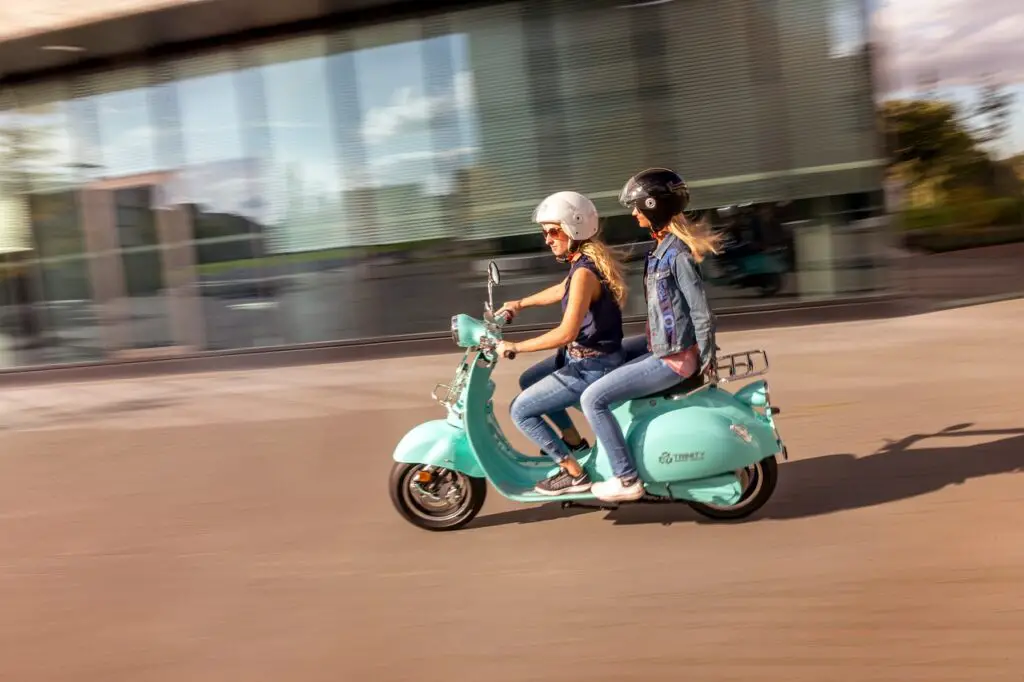Are you wondering if electric scooters are easy to ride? Electric scooters have taken the world by storm, becoming a popular choice for short commutes, quick errands, and even recreational fun. If you’re considering joining the e-scooter trend, you might be wondering: Are electric scooters easy to ride? The short answer is yes! However, like any mode of transportation, it requires some basic understanding and practice. Let’s break it down for you.
What Makes Electric Scooters Easy to Ride?
1. Simple Controls
Most electric scooters come with a user-friendly design, featuring basic controls such as:
- A throttle to accelerate.
- Brakes for slowing down.
- Some models even have cruise control for convenience.
This straightforward setup eliminates the complexity of manual gears, making it accessible to beginners.
2. Lightweight and Portable Design
Electric scooters are generally lightweight and easy to maneuver, making them a great option even for those without prior experience on two wheels. Many models are foldable, which adds to their convenience for carrying or storing.
3. Low Speed for Beginners
Most e-scooters offer adjustable speed settings, allowing new riders to start slow and gradually increase their pace as they gain confidence.
Factors to Consider When Riding an Electric Scooter
While e-scooters are beginner-friendly, there are a few factors to keep in mind to ensure a smooth experience:
1. Balance
If you’ve ridden a bicycle or a regular scooter, you’ll likely find balancing on an e-scooter straightforward. However, for first-timers, a bit of practice may be needed. Start by standing on the scooter with one foot on the deck and the other on the ground for stability before engaging the throttle.
2. Terrain
Smooth, flat surfaces are the easiest to ride on. Avoid starting on rough terrain, steep hills, or slippery surfaces until you’re more experienced.
3. Braking Techniques
Getting comfortable with the brakes is crucial. Most e-scooters have either hand brakes or foot brakes, and practicing how to use them efficiently will help you stop safely.
Tips for First-Time Riders
1. Wear Protective Gear
Always wear a helmet, and consider additional gear like elbow and knee pads to protect yourself from potential falls.
2. Practice in a Safe Area
Start riding in a quiet, open space like a parking lot or park to get the hang of acceleration, turning, and braking.

3. Maintain Proper Posture
Stand with your knees slightly bent and your weight evenly distributed. Keep both hands on the handlebars and look ahead to maintain balance and control.
4. Start Slow
Many e-scooters have beginner-friendly modes or speed limits. Start at the lowest setting and gradually increase your speed as you feel more comfortable.
5. Be Mindful of Battery Life
Check your scooter’s battery level before heading out to avoid being stranded mid-trip.
What Challenges Could You Face?
While electric scooters are generally easy to ride, a few challenges could arise:
- Steep Learning Curve for Some: Balancing and maneuvering may feel tricky for those without experience on two-wheelers.
- Traffic Navigation: Riding in busy areas or on roads with cars requires extra caution and awareness.
- Weather Conditions: Rain or wet surfaces can make riding slippery, so it’s best to avoid bad weather as a beginner.
Who Can Ride an Electric Scooter?
Electric scooters are suitable for people of various age groups (usually 16+ based on local laws) and fitness levels. Whether you’re commuting to work, running errands, or enjoying a casual ride, an e-scooter can be a convenient and eco-friendly choice.
Final Thoughts
Yes, electric scooters are designed to be intuitive and beginner-friendly. With basic practice and the right safety precautions, almost anyone can master riding an e-scooter in no time. Whether you’re a complete novice or someone looking for a quick and fun way to get around, e-scooters are an accessible option for all.
Discover more from Chikwem
Subscribe to get the latest posts sent to your email.